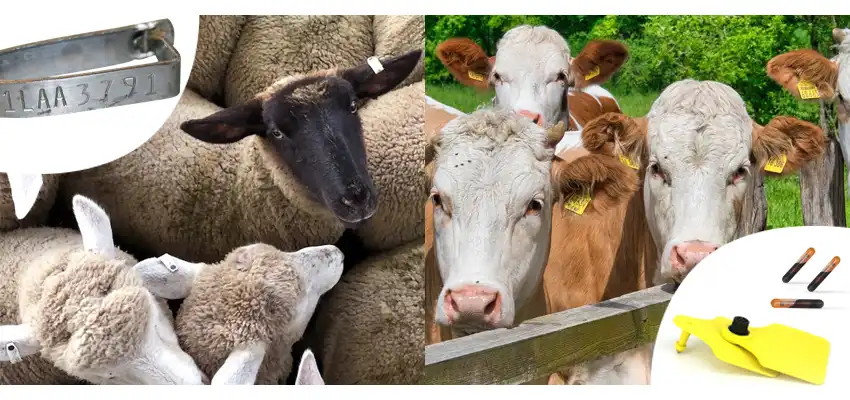For years, livestock industry professionals have debated the merits of traditional animal tags versus RFID animal tags. In this blog post, we will cover the key elements that make up both forms of tagging to help you decide which one is best suited for your livestock management program.

Traditional Animal Tags
Traditional animal tags are also known as metal or plastic ear tags. They are affixed to an animal’s ear or other identifying parts and contain information such as the animal’s breed, age, sex, and ownership information. These tags are typically used for identification purposes and do not store digital data. They can be quickly and easily applied with a special tagging tool. However, these tags can be lost or removed by predators and require manual scanning for proper identification.
RFID Animal Tags
RFID (Radio-Frequency Identification) animal tags are small chips that contain digital data about an animal’s identity, health records, genetics, production history, and more. These chips are usually inserted in an animal’s ear but can also be placed in implants or ingested orally depending on the type of chip being used.
RFID technology allows for quick and accurate scanning of multiple animals at once without having to manually scan each individual tag. This makes it easy to monitor large herds of animals in a relatively short amount of time. Additionally, RFID technology can store much more data than traditional animal tags which makes it ideal for larger operations where tracking hundreds or even thousands of animals is necessary.
Conclusion:
When it comes to deciding between traditional animal tags versus RFID animal tags, there is no right or wrong answer since both types have their advantages and disadvantages depending on what kind of livestock management program you need to implement. Traditional animal tags are simple and easy to use while RFID animal tags offer enhanced storage capacity and faster scanning times for larger operations with multiple animals.
Ultimately it comes down to understanding your own specific needs when it comes to tracking your animals so that you can make an informed decision about which type of tag is best for your situation. System integrators, Purchasing personnel, and corporate executives should all consider both options before deciding on the best solution for their organization’s needs.
Relevant articles
- Why are more libraries using RFID technology?
- RFID for Access Control Management You Would Like to Know
- The Ultimate Guide to Know RFID Asset Management
- RFID for Laundry: How it works? What the benefits?
- Deeply Dug: RFID for Tracking
- 9 Common Applications RFID in Hospitals
- How does RFID revolutionize manufacturing?
- How RFID Technology Changes the Garment Industry?
- The Most Complete Guide To Custom Smart Cards






